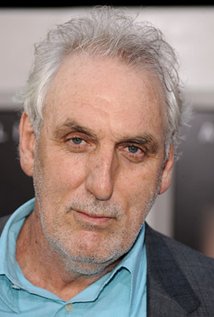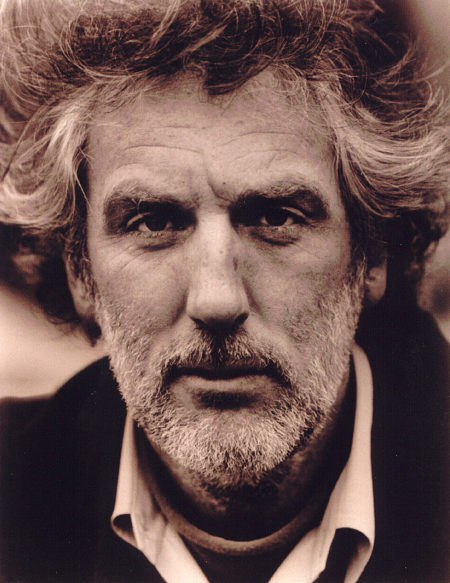
Phillip Noyce
Birthday:
29 April 1950, Griffith, New South Wales, Australia
Height:
193 cm
Born in the Australian outback town of Griffith, New South Wales, Phillip Noyce moved to Sydney with his family at the age of 12. As a teenager, he was introduced to underground films produced on shoestring budgets as well as mainstream American movies. He was 18 when he made his first film, the 15-minute "Better to Reign in Hell," utiliz...
Show more »
Born in the Australian outback town of Griffith, New South Wales, Phillip Noyce moved to Sydney with his family at the age of 12. As a teenager, he was introduced to underground films produced on shoestring budgets as well as mainstream American movies. He was 18 when he made his first film, the 15-minute "Better to Reign in Hell," utilizing a unique financing scheme selling roles in the movie to his friends.In 1973 he was selected to attend the Australian National Film School in its inaugural year. Here, he made "Castor and Pollux," a 50 minute documentary which won the award for best Australian short film of 1974.Noyce's first professional film was the 50-minute docudrama "God Knows Why, But It Works" in 1975. This helped pave the way for his first feature, the road movie "Backroads" (1977) which starred Australian Aboriginal activist Gary Foley and iconic Australian actor Bill Hunter who would go on to appear in 2 other Noyce films. In 1978, he directed and co-wrote "Newsfront," which won Best Film, Best Director and Best Original Screenplay at the Australian Film Awards, as well as proving a huge commercial hit in Australia. In addition to opening the London Film Festival, "Newsfront" was the first Australian film to screen at the New York Film Festival.In 1982, Heatwave (1982), co-written and directed by Noyce and starring Judy Davis, was chosen to screen at the Director's Fortnight at the Cannes Film Festival.The success of the Australian produced Dead Calm (1989), starring Nicole Kidman, Sam Neill and Billy Zane brought Noyce to Hollywood, where he directed 6 films over the next decade, including Patriot Games (1992) and Clear and Present Danger (1994) starring Harrison Ford, and The Bone Collector (1999), starring Oscar© winners Denzel Washington and Angelina Jolie.In 2002 Noyce returned to his native Australia, where released two films worldwide at almost the same time.The Quiet American (2002) starred Michael Caine in an Academy nominated Best Actor performance and appeared on over 20 top ten lists for 2002, including the National Board of Review and the American Film Institute.Rabbit-Proof Fence (2002) was based on the true story of three Aboriginal girls abducted from their families by Australian authorities in 1931 as part of an official government policy. The film won Best Picture at the Australian Film Awards, and together with The Quiet American garnered Noyce numerous best director awards including National Board of Review in the US and UK's London Film Critics Circle.In 2006 Noyce directed Tim Robbins and Derek Luke in the South African set political thriller Catch a Fire (2006).2010 Saw Noyce re-teaming with Angelina Jolie for his biggest box-office hit, the spy thriller Salt (2010), which grossed $295 million worldwide.Noyce's television credits include the Australian mini-series "The Dismissal" as well as "The Cowra Breakout," which he also co-wrote. In the US, Noyce directed the pilots for Fox's "Tru Calling" and Showtime's "Brotherhood" TV series. In 2011, Noyce directed the pilot for ABC Network's current hit series, "Revenge." Show less «
A true director is not a director because he necessarily understands the technical aspects of making movies. That can be learned. What can't...Show more »
A true director is not a director because he necessarily understands the technical aspects of making movies. That can be learned. What can't be learned is a voracious appetite for telling stories. Directors spend most of their lives caught up in telling stories. It's a lifelong passion. Don't wait around. Work on your own stories. It's quite cheap. Show less «
[on leaving Australia and working in Hollywood] I became a nowhere man, I wasn't an Australian, I wasn't an American. I was living in a coun...Show more »
[on leaving Australia and working in Hollywood] I became a nowhere man, I wasn't an Australian, I wasn't an American. I was living in a country where I was a migrant guest worker -- the only political organization I was a member of was the Directors Guild. Show less «
I first became interested in movies as a result of my fascination with the traveling tent shows that came to my small country town when I wa...Show more »
I first became interested in movies as a result of my fascination with the traveling tent shows that came to my small country town when I was a child. And my fascination with the tent shows was an attraction to the ability of the performer to engage the audience. So I've always seen myself as an entertainer of the public. Nothing gives me greater pleasure than to sit in a cinema where one of my films is screening and to feel the pleasure that I'm giving to the audience. That's what makes it all worthwhile. I'd make films for nothing if they told me there was no other way of getting a film financed, just so that I could continue to feel the thrill of that contact with a satisfied public as you take them into the make-believe world that you've created for them. Show less «
[on Sliver (1993)] I just became so tired I couldn't get off the floor. I had to have doctors constantly injecting me with vitamins. I was t...Show more »
[on Sliver (1993)] I just became so tired I couldn't get off the floor. I had to have doctors constantly injecting me with vitamins. I was trying to give up smoking at the time and I don't think I was all that stable myself, as I had been inhaling up to six packs a day previously; I was terribly addicted and had decided to give up before "Sliver". This probably wasn't a good idea for my equilibrium. But every day of pressure on the "Sliver" set caused bad nicotine-induced panic attacks, so the chaos of the whole thing was not something I could blame on others. The film had become a Hollywood nightmare with a producer (Robert Evans) who, from the beginning, had dreamt of his movie being directed by someone else, a writer (Joe Eszterhas) who had abandoned a best-selling novel to pen his own version of the story, an actress (Sharon Stone) who I couldn't communicate with and who loathed her co-star (William Baldwin) and producer, and a cinematographer (Vilmos Zsigmond) who was creating beautiful images at a snail's pace, on a set that made more noise than the actors when they spoke their lines. At night I dreamt of turning up at a schoolboy rugby match and then running onto the field only to discover I'd left my football boots at home. I'd wake with a deep sense of dread. Facing another day at the factory that filmmaking had become. Show less «
[on The Saint (1997)] It was an opportunity at the time to create a franchise. At the end of the first screening, Sherry Lansing, the head o...Show more »
[on The Saint (1997)] It was an opportunity at the time to create a franchise. At the end of the first screening, Sherry Lansing, the head of the studio, was genuinely crying. She said it was a brilliant film and that it was Doctor Zhivago (1965)-ish. Later I did feel resentful that Sherry Lansing had initially been so enthusiastic about the movie, only to eventually talk me into cutting those things which had most moved her when she first saw the film. Show less «
Between a beginner and an experienced actor there is a huge gap. And often it's better not to fill that gap, because someone with absolutely...Show more »
Between a beginner and an experienced actor there is a huge gap. And often it's better not to fill that gap, because someone with absolutely no experience, and therefore no technique, can be just as good as the most experienced actor. With experience come actorly tricks, acting techniques that can make a performance false. Show less «
[on digital film technology] Recently I did a HBO series with Michael Mann written by David Milch called Luck (2011) where we used the Arri ...Show more »
[on digital film technology] Recently I did a HBO series with Michael Mann written by David Milch called Luck (2011) where we used the Arri Alexa camera which is a real breakthrough. I can say after working with that that film unfortunately is dead, because you can do everything on the Alexa camera that you can do on film. It can look exactly like film when it's projected. We were shooting exterior L.A. streets no lights. It's become a situation where night shooting is actually quicker than day shooting now with the new cameras. Whereas night shooting you'd say, 'Oh, you'll shoot 11 shots at the most.' Now you can shoot 60. It's really fast. It was the freest shooting I've ever been involved with. Michael Mann has chosen the three operators from experience, so they're all really inventive. Usually you finish early because the crew are living in terror of Michael turning up on set. So they're fast like a wild horse that's been broken in. So they're director friendly. Show less «
















